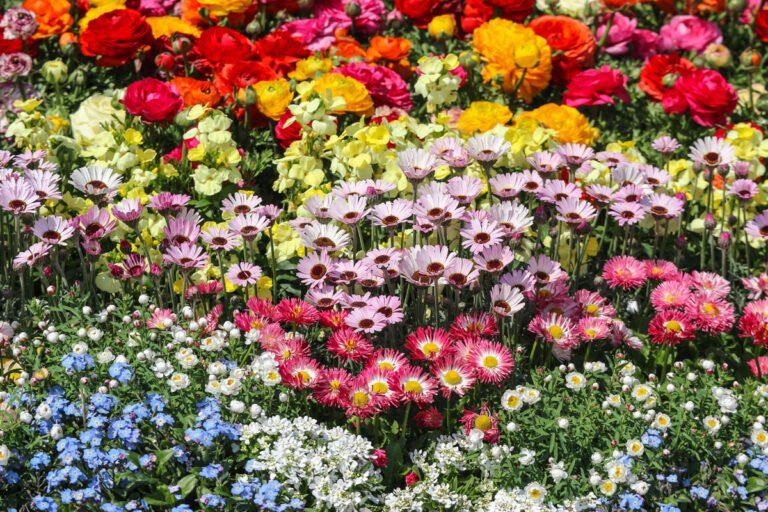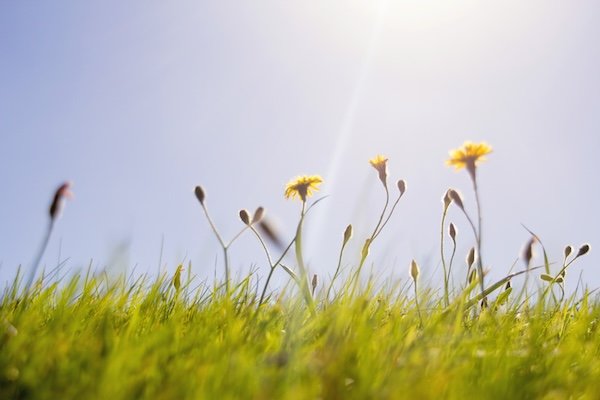June is here, let’s get ready for the arrival of summer and holidays without forgetting our beloved green space. There is indeed plenty of work ahead of us but also many moments of relax and fun! The days are getting longer and the temperatures are rising, two good reasons to spend more hours in the garden or on the terrace. Let’s take a look at the main operations together.
General maintenance
We regularly remove wilted flowers from herbaceous plants in flowerbeds or pots. Let’s hoe the borders to keep weeds away. We distribute a layer of mulch in the flowerbed or around the base of trees and shrubs to keep constant soil moisture. We need to prune shrubs at the end of their spring flowering such as Weigela florida, Philadelphus and Kerria japonicae by removing the oldest branches. We tie the new stems of the climbing roses to the stakes with twine or other natural material to foster their future blossoming, as well as the new shoots of blackberries and raspberries. Fertilise plants in flowerbeds or planters with a balanced liquid fertiliser specifically for ornamentals, diluted in the irrigation water at the right doses and frequency.
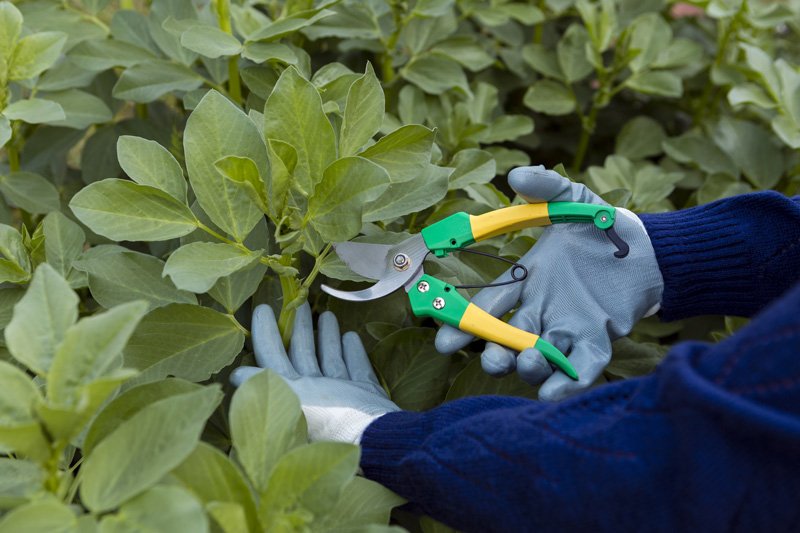
Transplanting
Keep on planting beds and borders with herbaceous annuals and perennials, filling in any empty spaces, but make sure to prepare the soil properly by removing weeds and large pebbles, adding compost to improve fertility, structure and water retaining, and slightly grading the soil to create a raised flowerbed to improve drainage of water. Let’s choose in advance the species to be planted, using a pencil and pen to draw the plan of our flowerbed or border decideing which plant we intend to place in a given spot, adopting a planting density suitable for the future plant development. We can create homogeneous groups with only one species and variety, or mixed ornamental compositions, compact and rich in colour, arranging plants of different heights to create perspective views with a high landscape value. Colour combinations can include shades of the same hue or alternating one, even choosing from the different available varieties of the same botanical species, composing designs or patterns according to our personal fantasy. Don’t forget to water abundantly after planting to allow proper establishment in the new planting site, supplying water directly to the soil without causing water stagnation that can lead to root rot. Due to the current climate changes with increasingly hot and dry summers we can also choose plants that require less water and tolerate high summer heat such as Gazania splendens, Osteospermum x hybrida, Senecio cineraria and Stachys byzantina.
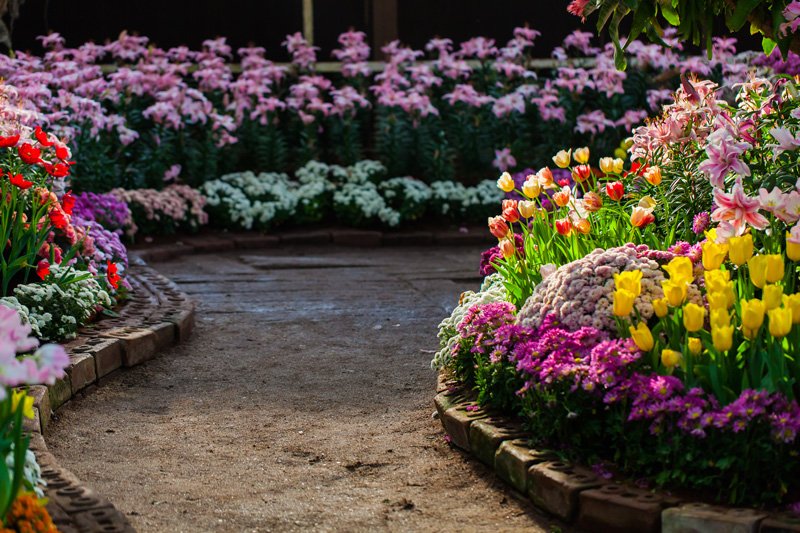
What do you say? You don’t have a garden but a fantastic terrace? Then we can create wonderful mixed arrangements in pots or planters and why not also in baskets or hanging baskets to give a touch of English style with spontaneous naturalness by including species such as Argyranthemum frutescens, Erigeron karvinskianus, Helichrysum petiolare, Lysimachia congestiflora, Dichondra argentea, Pelargonium (geranium), Lobelia erinus, Petunia, Salvia officinalis and to give a distinctive accent even strawberry plants! Remember that soil often dries out more quickly in pots, planters and baskets than in flowerbeds, so water more regularly, preventing both dry spells and over-watering.
If we have a lot of pots we can have an automated drip irrigation system installed or, for the more experienced in the subject, create one that supplies water slowly and directly to the roots, thus reducing the risk of wastage; systems with timers are great must adjusted according to plant growth and seasonal temperature fluctuations are excellent.
For garden transplants, now is the time to start with pumpkins, courgettes, aubergines, tomatoes and strawberries.
Sowing
Until mid-June there is still time to sow some ornamental grasses such as Cosmos, Nasturtium, Phlox and Zinnia outdoors. If we then have a part of the garden or balcony used as a vegetable garden, we can entertain the little ones by sowing carrots, chicory, green beans, corn, pumpkins, courgettes and among the herbs dill, basil, chamomile and parsley.
Lawn
If not already done, carry out a mainly potassic fertilization to improve heat and drought resistance. When mowing the lawn remember that it is now better to raise the blades of the mower slightly if it has not rained much in the previous weeks, on average maintaining a grass height of 6 cm to increase tolerance to higher temperatures, always check that the blades are sharp so as not to damage the turf.
We can also consider not cutting certain areas to encourage the growth of wild flowers, creating a spontaneous landscape and preserving biodiversity. The hot climate favours the development of many weeds, both annuals and perennials, so we can counteract them with alternative methods to selective weeding such as grubbing and increasing the cutting height in order to obtain a more compact and dense lawn so that weeds cannot develop and dominate. From June and throughout the summer period we have to pay particular attention to irrigation management, it is often thought that if it is very hot we need to water more, this is true but we must be careful not to water too much so as not to cause stagnation with subsequent root rot and death of our lawn!
House plants
Start by fertilizing your indoor plants with a specific liquid fertilizer, continuously until autumn; as the temperature rises and there is more sunlight, water them more constantly, adding temperate water directly to the soil without causing water stagnation. If the plant has grown too large for its pot we proceed to repotting in a larger container, using a new, high quality medium. For those species that do not like direct sun, place them in an area where they receive diffuse light. Clean the leaves with a cloth dampened with water to remove dust from the leaves, paying attention to the possible presence of phytopathogens such as aphids and mealybugs to be eradicated with specific products.
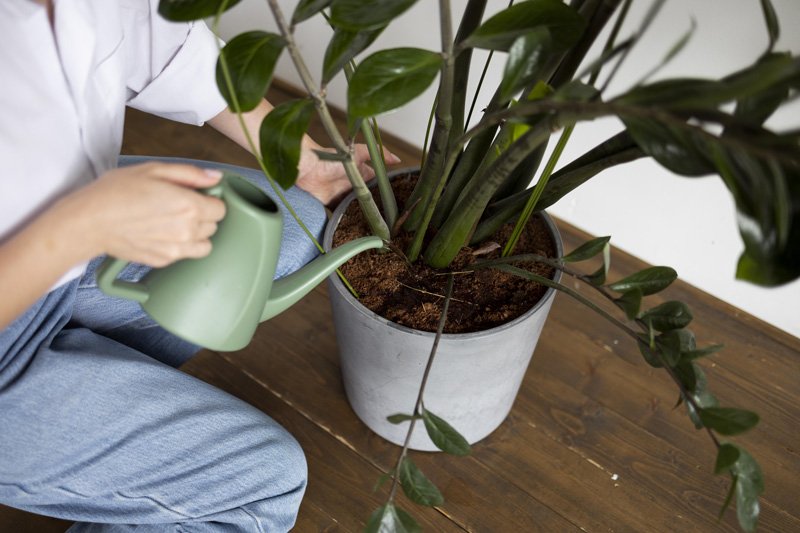
And again
Water represents a resource of primary importance, with summer approaching and with the rising temperatures it is inevitable to increase watering but let’s do it wisely using rainwater collected in the previous months in one or more tanks, if we have not yet installed one we are still in time to do so as summer storms are frequent. We harvest some of the lavender inflorescences to perfume our linens or give a country accent to our interior spaces. We always leave fresh, clean water available for birds, hedgehogs and other wildlife.
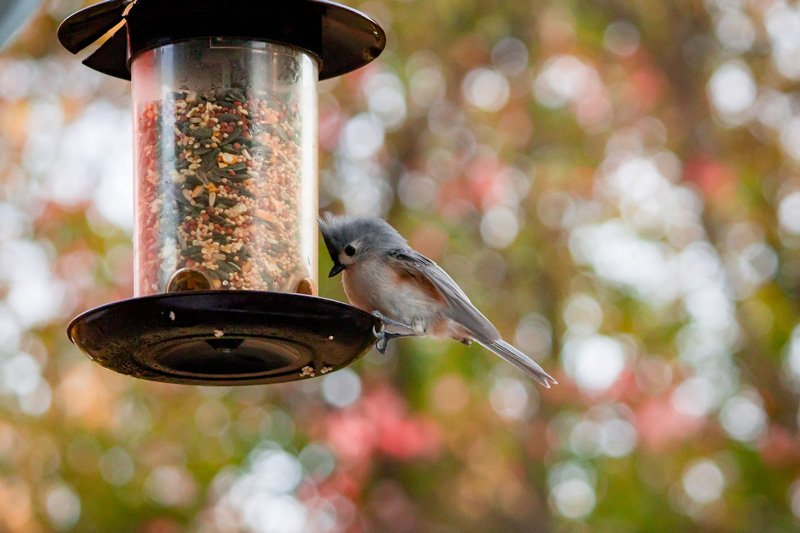
We are saying goodbye to spring to welcome summer, so let’s prepare ourselves in the best possible way for unforgettable days in our wonderful green space!


